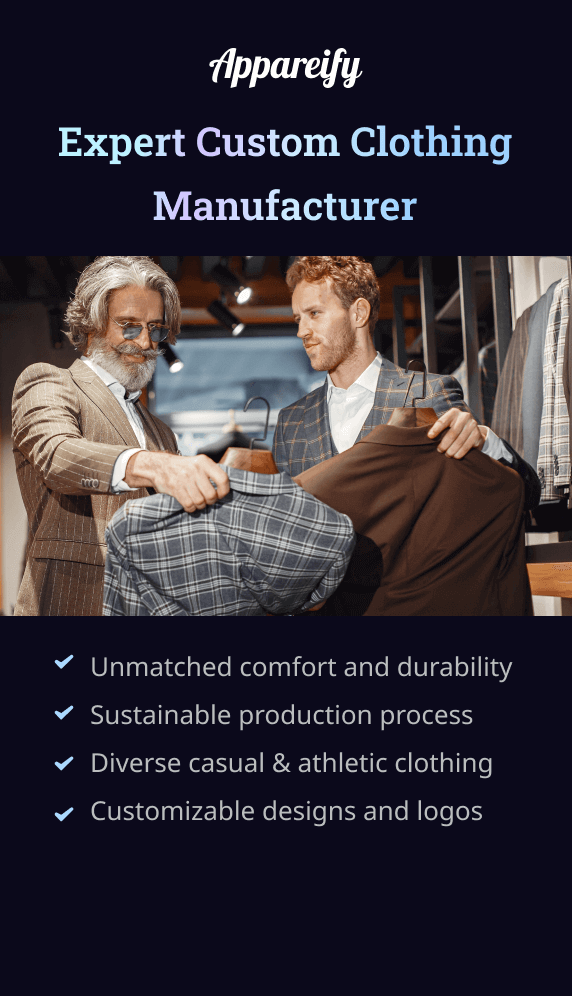Today, people of all genders wear leggings in various ways worldwide, making it one of the most popular and versatile pieces of clothing in the world. They're worn as gym clothes, underneath shorts, and even as everyday clothes. Considering the market potential, it could be a great opportunity to start a leggings business.
There are plenty of leggings fabric to choose from. As a brand owner, you need to address a few important questions before committing to this endeavor. What are leggings made of? What are the best materials and fabrics for leggings? How do they affect the comfort, durability and performance of leggings?
In this article, we will guide you through the different types of fabric for leggings to solve these questions. And you will also find some tips on how to choose the best leggings material for your clothing business.
What Are Leggings Made of?
Cotton
If you've ever worn cotton clothing, you know how comfortable it can be. This legging material is soft on the skin, stretchy enough to encourage mobility, breathable and strong. You can wear them every day without feeling stuffy or constricted. Still, even such light material has its drawbacks.
One of the drawbacks is their durability. As cotton leggings wear out, you might realize they no longer fit you well. That's because, over time, cotton clothing tends to stretch out permanently, unable to snap back to its original shape.
Another disadvantage is that cotton typically becomes heavy when wet, making it less ideal for high-intensity workouts where you sweat profusely. Cotton soaks up sweat and doesn't dry as quickly as other leggings fabric.
However, these issues become less prominent by incorporating stretchy materials like Spandex or lycra into the leggings. The addition of these materials improve the resilience of the leggings, maintaining their shape and fit over time. Besides, they reduce moisture retention, improving performance and comfort during exercise.
Polyester
Polyester is believed to be one of the best materials for leggings. This yoga pant material is synthetic and made from polyethylene terephthalate (PET), a mixture of ethylene glycol and terephthalic acid. In simple terms, it's a kind of plastic. However, it's what makes it super water-resistant and durable.
Polyester retains its softness and breathability like cotton while improving its resistance to moisture and stretchiness. You can wear it outside while you work or run your daily errands without the fear of overheating.
One drawback regarding this yoga pant material is that polyester easily retains a smell. While washing them after a gym workout will keep them fresh for the next time, the odor issue can rear its ugly head in the middle of an activity.
Fortunately, this issue can be avoided by opting for a blend of polyester and antimicrobial types of legging material or materials with antimicrobial treatments.
Spandex
Spandex, also called elastane or lycra, is the stretchy leggings fabric for tights that's present in almost every pair of leggings out there. Stretching up to 500%, it's what makes leggings return to their original shape and retain it over time. Spandex activewear leggings are also known for hugging your body well and giving you that desired “snatched” shape you want to see after working out.
But keep in mind that leggings should contain only a percentage of Spandex, ideally around 15-25%. Otherwise, they'll feel stuffy and sticky to your legs and hips, which is the least desirable feeling when moving and being active. Spandex can be added to nylon, cotton, and wool to compensate for their disadvantageous properties.
Although the production of spandex is energy-intensive and polluting, it is noteworthy that spandex can be recycled. In addition, the durability of leggings made from spandex ensures their longevity and reduces the need for frequent replacement.
Nylon
Nylon is lightweight, silky, stretchy, durable, and doesn't wrinkle even when you stuff it into your gym bag. Unlike cotton, this leggings material is prone to shrinking rather than stretching out.
However, it's important to note that nylon requires a specific washing method can be impractical if the leggings are the only nylon item needing washing. To address this concern, consider looking into leggings that mix nylon with other materials that have fewer washing requirements.
Nylon is 100% synthetic. But it can be a sustainable material if made from recyclables. Nylon is also more desirable for activewear than polyester since it doesn't retain bad smells. In addition, it's resistant to UV rays, abrasion, and moisture. But keep in mind that nylon has a shiny appearance that many people dislike.
Nylon-Spandex
As mentioned, Spandex can be added to nylon. It's a classic blend that incorporates all the good aspects of both. These leggings are stretchy, lightweight, and soft. They also have excellent moisture-wicking properties and don't retain bad smells.
Nylon-Spandex leggings are popular among gym goers, bicycle riders, fitness gurus, and yogis. However, these leggings are not limited to fitness enthusiasts; they are also favored by individuals who appreciate their performance and aesthetics. Therefore, if you want to cover as many customers as possible, look no further than nylon-Spandex leggings.
Wool
The last on the list are wool leggings. Wool leggings aren't the most popular yoga pant fabric. But suppose your target market is in a colder region, or you're releasing a line during winter, wool can be an ideal choice. This is because this type of leggings material is excellent at keeping warm air trapped and maintaining body temperature.
Additionally, the main reason wool leggings are a popular choice for many brands is their sustainability. Wool is a natural material that re-grows and gets collected yearly, making it the most sustainable legging material on the list. Wool also has great odor control, so it won't retain unpleasant smells even when worn for a long time.
But this legging fabric does require a lot of material and labor, which can significantly raise their price. And since wool leggings are created to keep you warm, they can be pretty heavy. They're also not stretchy, so they're definitely not an activewear material.
How to Choose the Perfect Legging Material for Your Brand
As a brand looking to increase customer satisfaction, you need to be informed about the available leggings materials for every piece of clothing you produce. As seen above, there are only a select number of options when it comes to leggings. Moreover, not all of them are a popular choice.
Still, the main aspect that determines whether leggings of a certain material will be your top-sold product depends on how you pair the material with the leggings' purpose.
For example, if your target customer is a fitness enthusiast, then moisture wicking and stretch may be critical. In contrast, if your target customer uses leggings as everyday wear, softness and breathability may be key factors. Choose a material that meets the performance characteristics your customers need.
Increase Customer Satisfaction With the Right Leggings Clothing Manufacturer That Use the Best Material for Leggings
As a leading leggings manufacturer, Appareify understands the importance of using only the best materials and fabrics. By using these quality materials, we produce leggings that are comfortable, durable, and stylish.

With our private label service, we offer you the opportunity to completely customize your leggings. You can choose your favorite leggings fabric, color, and more, ensuring that your leggings perfectly reflect your brand and meet your customers' unique preferences.

